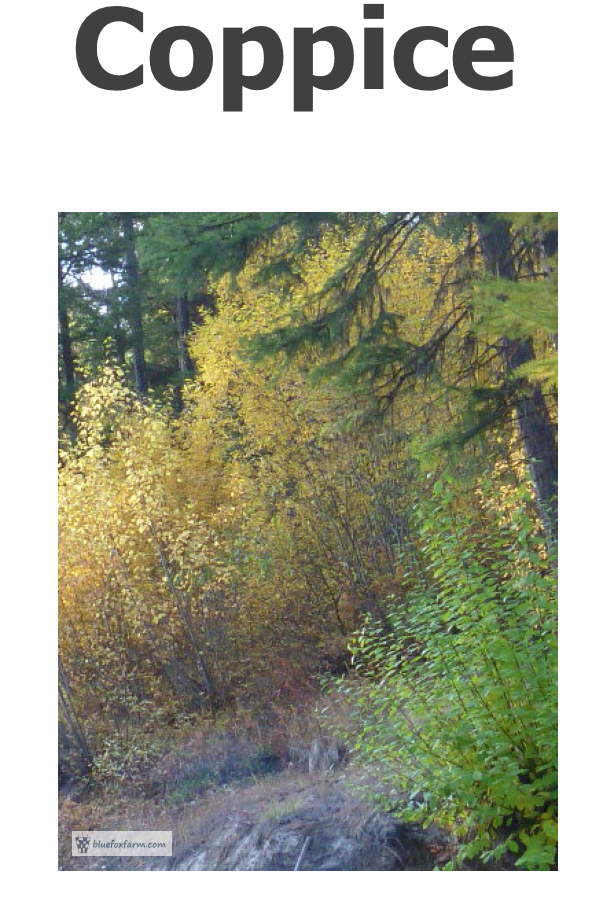

Head Office & Manufacturing Grand Rapids. 4595 Broadmoor Ave SE Suite 120, Grand Rapids, MI 49512. T: +1 (616) 988-8624 / +1 (866) 232-2149 (Toll Free). Similar to the word ‘copse’, which refers to a small group of trees, to coppice means to strike ‘a blow’ - taken from the Latin colpus. Copse is a shortened version of coppice, probably because after you coppiced a group of trees, you ended up with a copse. Coppicing in history People have been coppicing since pre-historical times. How to coppice foxglove tree Coppicing exploits the natural growth pattern of trees: if the main stem has been cut or has fallen, it will send up shoots in a bid to survive. Essentially, if the root system has been used to feeding a large tree, it will put its energy into producing new growth and foliage.
Coppicer

CoppiceAgroforestry.com Selected for ForestryDegree.net's top 100 Forestry Resources!
We're pleased to announce that coppiceagroforestry.com was recently nominated, and subsequently selected, as one of ForestryDegree.net's top 100 Forestry Resources on-line. You can view the whole list at http://www.forestrydegree.net/top-100-resources/
Coppiced Trees
Coppice Agroforestry: Perennial Silviculture for the 21st Century
a forthcoming book by Mark Krawczyk and Dave Jacke
Coppice Meaning

Coppice Pruning Guide
We humans must develop land management systems that provide diverse products to meet our needs while regenerating healthy ecosystems. Coppice agroforestry systems can do exactly this.
Many woody plants resprout from the stump or root suckers when cut to the ground--we call the regrowth 'coppice', and the management system 'coppicing'. Many ancient cultures understood this plant behavior and managed coppice to produce their fuel, craft and building materials, livestock fodder, fencing, and much more. In North America, coppicing was a casualty of European emigration from a culture of resource conservation (by necessity) to one of widespread overexploitation and industrialization. We now must re-engage with these practices and develop them to a high art for our times and for our future.
Mark Krawczyk (www.keylinevermont.com and www.rivenwoodcrafts.com) and Dave Jacke (www.edibleforestgardens.com) have therefore decided to write Coppice Agroforestry: Perennial Silviculture for the 21st Century. Coppice Agroforestry will serve as a detailed manual for foresters, farmers, craftspeople, and land managers describing the history, ecology, economics, design, and management of agroforestry systems based on the repeated harvest of small diameter wood products from resprouting tree stumps. Bridging ancient coppice traditions and cutting-edge agroecosystem design, Coppice Agroforestry will articulate a practical vision of forest management that integrates ecosystem health, economic viability, multi-generational tree crops, and diverse non-timber forest products. Our book will fill several critical gaps that so far have been unfilled in the literature on coppice woodlands - namely:
- How to apply this strategy to North American ecosystems and species;
- Effective design processes for multifunctional, productive landscapes;
- Details on coppice system establishment;
- Consolidated research from a scattered literature;
- Data on projected system yields;
- An in-depth discussion of coppice products and market potential.
As we strive for solutions to stabilize our communities, economies and ecologies, it’s vital that we come prepared with a diverse and well-stocked toolbox. Coppice woodland management can and will provide complementary solutions for a post-petroleum world. We feel eager to contribute to this expanding toolbox with Coppice Agroforestry.
While we have found publishers interested in this book, we have chosen to self-finance the manuscript production phase, and need help to do so. We have already begun work, with literature research, searches for case studies, and first drafts underway.
We look forward to hearing from you all, to developing this resource in support of our planet and people, and to sharing the results of our work with you in the future! Thanks very much!
Click here to contact us and find out more

